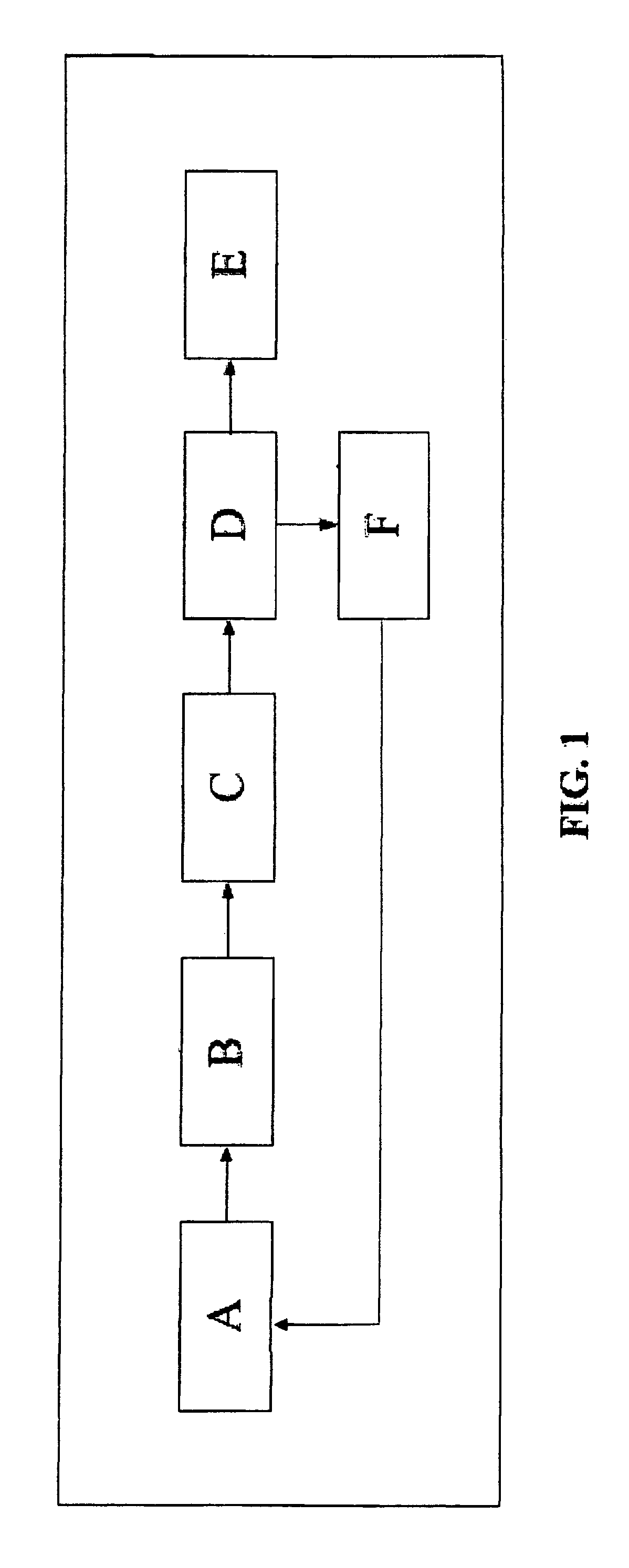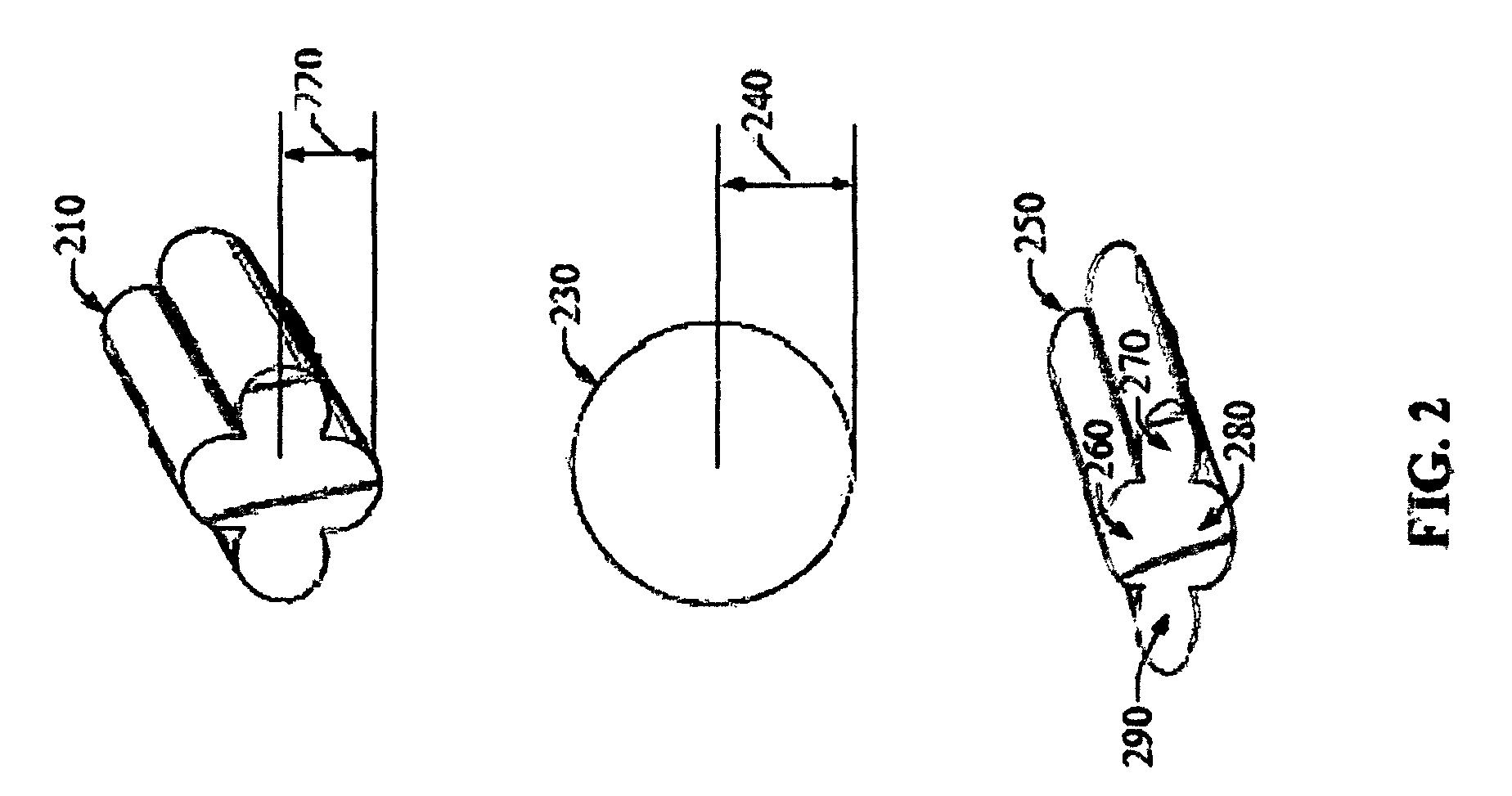Catalyst and process for the production of diesel fuel from natural gas, natural gas liquids, or other gaseous feedstocks
a technology of catalyst and process, which is applied in the direction of physical/chemical process catalyst, hydrocarbon oil treatment product, combustible gas purification/modification, etc., can solve the problems of undesirable complete removal of oxygenates including high molecular weight linear alcohols, and achieve high yields
- Summary
- Abstract
- Description
- Claims
- Application Information
AI Technical Summary
Benefits of technology
Problems solved by technology
Method used
Image
Examples
example # 1
Example #1
[0084]Supported catalysts are prepared using an incipient wetness procedure whereby cobalt and promoter metals are impregnated on a gamma alumina, quad-lobed support with a mean effective pellet radius of 0.25 mm and a mean pore diameter of 130 Angstroms. The surface area of the catalyst is 110 m2 / g as measured by BET / N2 physisorption technique. The crush strength of the catalyst is 4 lbs / mm. Drying and calcination steps are used in the production process to produce a catalyst with 20 wt % cobalt and 0.3 wt % platinum promoter. Following the production of the supported catalysts, the supported catalysts are loaded in a multi-tubular fixed bed reactor of a tube in shell design with 1″ (2.54 cm) diameter tubes. The catalyst is reduced with hydrogen at 75 psig and at a temperature less than 650° F. which are operating conditions that can be achieved in a fixed bed reactor that can be manufactured inexpensively.
[0085]In an alternative embodiment, the catalyst is reduced with a...
example # 2
Example #2
[0091]In this example, a majority of diesel fuel is desired as product output from the plant. The same catalyst system and processes are used as described above in Example #1. Following the catalyst synthesis process, the light wax fraction is contacted with a catalyst that performs hydrocarbon cracking under mild operating conditions. In this example, the catalyst used is a platinum promoted catalyst.
[0092]In this example, a trickle bed reactor is used; however, other known reactors can be used as well. The reactor is operated in a pressure range of about 100 psi to about 400 psi, ideally at 150 psi in a temperature range of about 350° F. to about 600° F., preferably at 425° F. The H2 / wax molar ratio is in the range of 1.5-5, preferably equal to 2.
[0093]The output product converts up to about 75% of the normal paraffins to diesel fuel with a high selectivity, thus creating another diesel product steam that can be blended with the output from the first catalyst system.
example # 3
Example #3
[0094]The cold flow properties of a diesel fuel fraction are improved by splash blending the diesel fuel fraction with a cold flow improver. The same catalyst system and processes are used as described above in Example #1. Following the catalyst synthesis process, the diesel fuel fraction is splash blended with a cold flow improver that is blended at 2000 ppm and consists of alkyl-methacrylate copolymers.
PUM
| Property | Measurement | Unit |
|---|---|---|
| radius | aaaaa | aaaaa |
| weight percent | aaaaa | aaaaa |
| pore diameter | aaaaa | aaaaa |
Abstract
Description
Claims
Application Information
 Login to View More
Login to View More - R&D
- Intellectual Property
- Life Sciences
- Materials
- Tech Scout
- Unparalleled Data Quality
- Higher Quality Content
- 60% Fewer Hallucinations
Browse by: Latest US Patents, China's latest patents, Technical Efficacy Thesaurus, Application Domain, Technology Topic, Popular Technical Reports.
© 2025 PatSnap. All rights reserved.Legal|Privacy policy|Modern Slavery Act Transparency Statement|Sitemap|About US| Contact US: help@patsnap.com


